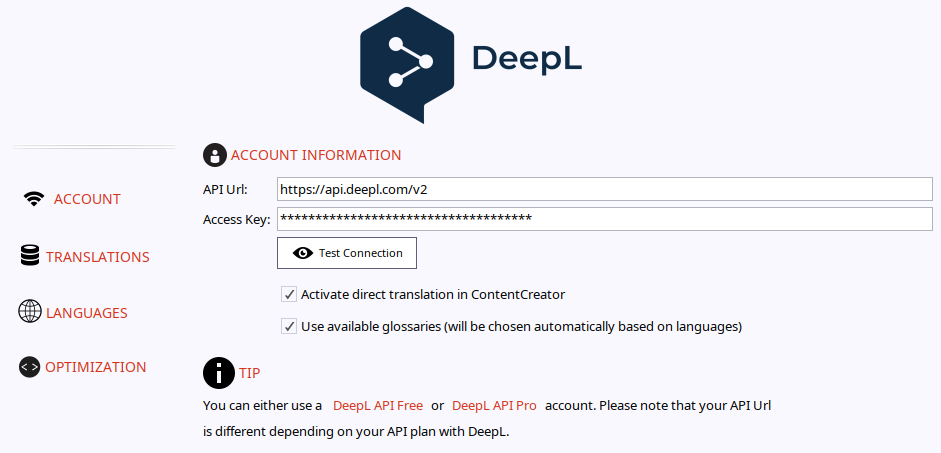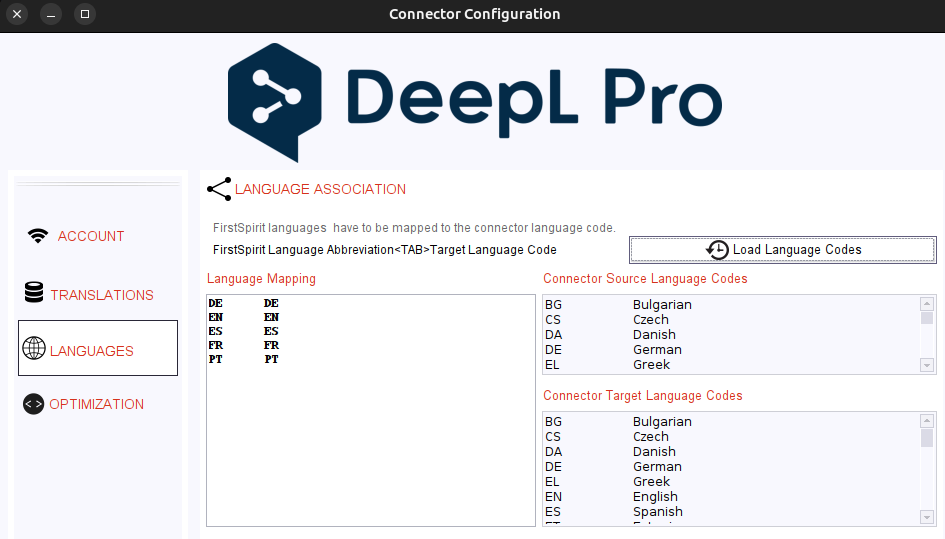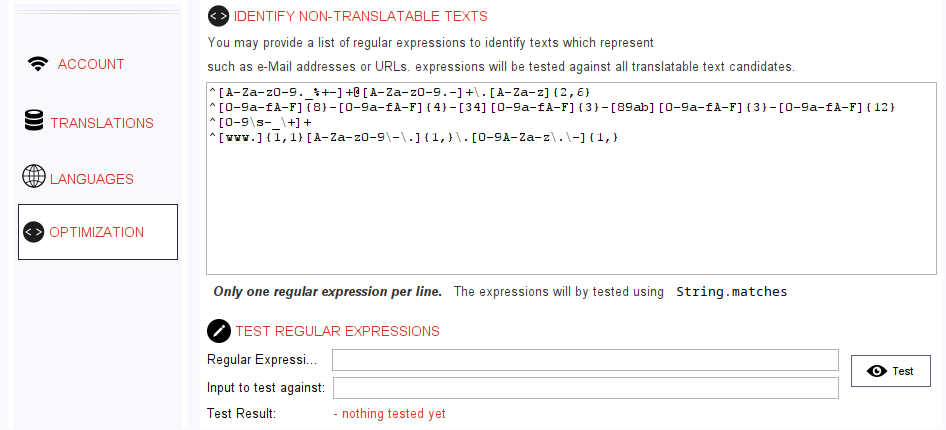1. Installing the Connector
This connector is available by default and you do not need to install it.
2. Requirements
You can use this connector with both, a DeepL API Free or DeepL API Pro account. Please note that your API URL might change depending on your account.
3. Configuration
3.1. Account Configuration
You have to provide valid credentials here. If you use a free account, make sure to update the endpoint url accordingly.

To test your settings, simply click on the Test connection button.
If you want to make use of this connector in a client’s side-by-side translation helper, you need to explicitly activate this connector by checking the respective checkbox (if available).
DeepL also supports glossaries. These have to be created manually and you may use them with this connector. If activated, the connector matches glossaries based on their language. Hence, you can only use one glossary per language.
| If you have multiple glossaires per language, this connector will make use of the first it obtains. |
3.2. Languages
DeepL uses standard language codes. Yet, you projects may use country-language codes (e.g. en-UK). Therefore, it is necessary to map your project (country-)language codes to DeepL language codes.

4. Using Glossaries
DeepL allows you to use glossaries. These work on a source-target language association. There are 2 options to make them available to translationstudio.
-
specific to a FirstSpirit project
-
globally (if no specific project assignment is available)
To use either of these options, all you need to do is following a simple naming pattern: Glossary Name (suffix)
The suffix can either be a specific FirstSpirit project id or global, i.e. to assign a glossary to the FirstSpirit project 14, your glossary name will be Any Name (14). Respectively, another name (global) identifies a global glossary.

